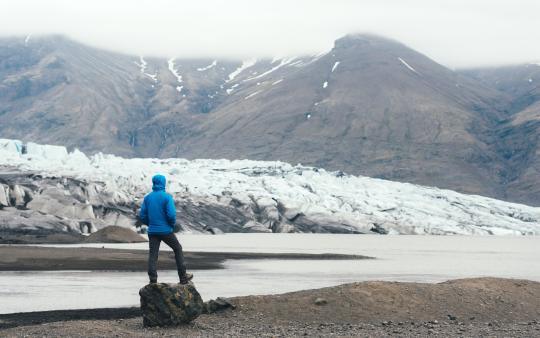Children are the future leaders and researchers of this world. To be able to confront the challenges they will meet, all children need the best-available, and science based information about climate change to bring the sense of urgency it deserves. Here's how you can help children understand about climate change in constructive ways.
Why should children learn about climate change?
The Earth's temperature is getting warmer, and the signs can be observed around the globe. Rain and snow patterns are changing, sea levels are rising, more droughts are being documented and warmer ocean waters are being recorded. As global temperatures continue to rise, scientific projections indicate that climate change could affect people, animals and ecosystems in a number of ways.
Many benefits are observed when children are educated about climate change. For example, studies show that information taught to students can be transferred to their families and wider communities. Educating our children about climate change also deepens their understanding of our physical and social world, giving them the chance to participate in decisions concerning our society and to get involved in community action. This, in turn, provides knowledge on how to live more sustainably.
How do we know climate change is happening?
Observations and measurements from all over the world provide strong evidence that the climate is already changing. Here, the Environmental Protection Agency provides signs of climate change:
Wilder weather
In the last 20 years, it has been recorded that Tropical storms and single-day storms have become stronger.
Increased ocean acidity
In the last few decades, Ocean acidity has risen making it difficult for sea life and corals to thrive.
Shrinking sea ice
Summer ice in the Arctic Ocean in recent years has been thinner and at a record low (since the 1970’s when scientists started using satellites to measure the area covered by ice).
How do we teach about climate change?
It’s important to educate children with the basic facts about climate change. Discuss simple questions:
- What can we do to help our Earth?
- Why does it matter that our Earth is getting warmer?
- What is making Earth’s climate warmer?
- What is weather?
- What is climate?
Make sure that the material introduced is age-appropriate, and create opportunities to discuss local climate impacts.
Don’t use scare tactics in your teachings (ex: focusing on tragedies and natural disasters). Instead, equip students with knowledge that can assist them in making choices that have a positive impact on the planet.
The National Aeronautics and Space Administration (NASA) have a wonderful website called Climate Kids. This website shares interactive information about climate change, and how children and parents can make a difference. It also includes a variety of activities geared towards climate change that you can do with your child.
Global climate change affects every aspect of our lives (from our environment, to the species that coexist on the Earth with us). How we comprehend, cherish, and protect these species and environments has an impact on the future of our natural habitats and resources, communities and ecosystems. By being proactive and giving students the skills they need to observe the effects of climate change, we are investing in the future of the Earth and helping them shape the world for future generations. To quote David Suzuki, “We have to recall the image of the planet from outer space: a single entity in which air, water, and continents are interconnected. That is our home.”









